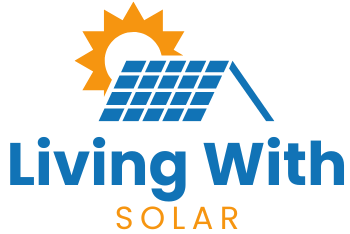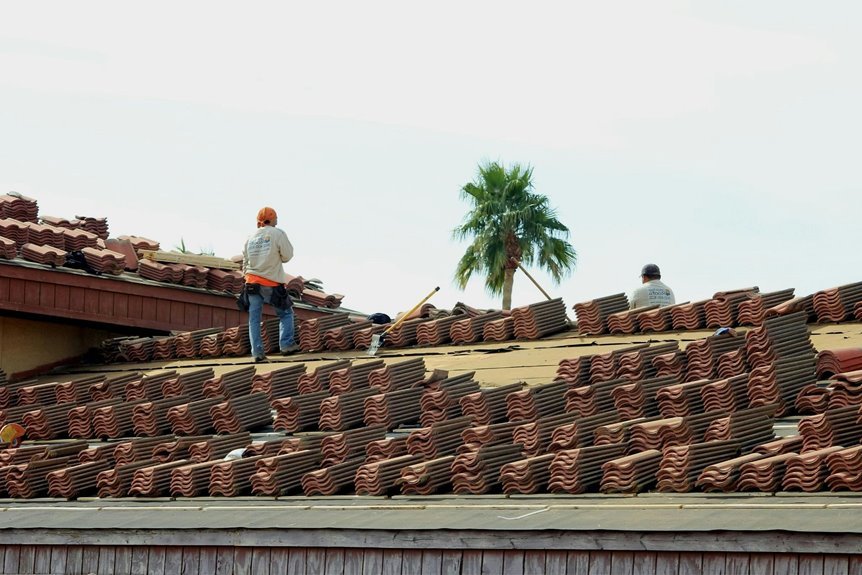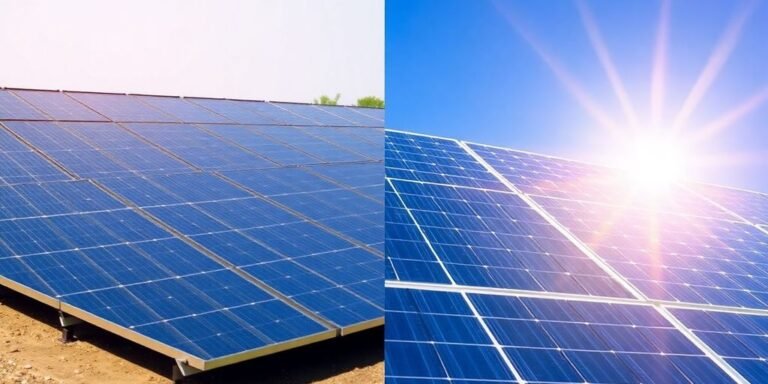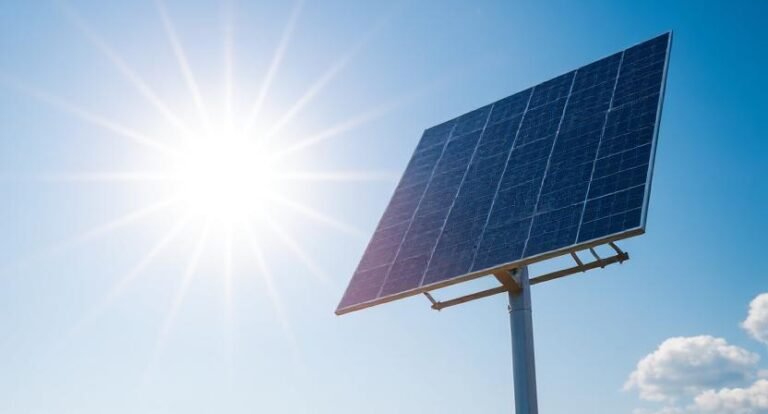To install solar panels on your roof, I start by evaluating the roof’s suitability and getting necessary permits.
Next, I securely install roof attachments using stanchions and make sure they’re watertight.
After that, I handle the wiring, connecting everything to the main electrical panel. Then, I mount the solar panels and double-check all connections.
Finally, I test the system for safety and performance. Let’s explore each step for a successful installation!
Key Takeaways
- Assess your roof’s suitability by checking space, condition, and potential obstructions before installation.
- Consult a professional to determine the number of solar panels needed based on your energy consumption.
- Securely install stanchions and flashing to support the panels and prevent leaks.
- Run proper electrical wiring from the panels to your main electrical panel, ensuring safety and code compliance.
- Conduct final tests to ensure all components are operational before activating the solar panel system.
🌞 Power Your Home with Solar – See How →
Planning Your Solar Panel Installation
Have you considered whether your roof is ready for solar panels? When planning your solar panel installation, it’s essential to assess your roof’s suitability. Check if there’s enough space, good condition, and no obstructions that could cast shadows.
Next, determine the number of solar panels needed based on your energy consumption. I recommend consulting a professional solar contractor to evaluate shading patterns and suggest ideal placement.
Don’t forget to obtain the necessary permits and approvals from local authorities. Finally, think about potential maintenance requirements to guarantee your solar panel system remains effective and efficient for years to come.
Installing Roof Attachments
Before you start installing solar panels, it’s important to secure the roof attachments properly. First, I use a stud finder to locate rafters beneath the shingles, ensuring strong support for my rooftop solar.
I then securely install stanchions with lag bolts, creating a solid connection point for the solar mounting system.
To prevent leaks, I apply flashing around the stanchions, creating a watertight seal.
Additionally, I use roofing sealant around any holes made during installation, protecting against moisture intrusion.
It’s vital that all stanchions are firmly attached to withstand various weather conditions and the weight of the solar panels.
Wiring and Electrical Work for Solar Panels
Wiring and electrical work for solar panels is an essential step in ensuring your system operates efficiently. I run conduit from the roof to the main electrical panel, making sure to follow local electrical codes.
This conduit allows electrical connections that transfer DC energy from the solar panels to the inverter, converting it to AC energy for my home. I consider using microinverters for better efficiency, as they allow individual monitoring of each panel.
Finally, I ground the system with a six-gauge copper wire to protect against electrical faults, ensuring safety during operation. Proper wiring is key to a successful solar setup.
Mounting Solar Panels
When I start mounting solar panels, I first assess my roof’s condition to guarantee it can support the weight of the system. Ensuring structural integrity is vital. Here are the steps I follow:
- Use a stud finder to locate rafters and securely install stanchions with lag bolts.
- Install aluminum mounting rails, ensuring they’re square and aligned, then tighten bolts for stability.
- Apply flashing around stanchions to create a watertight seal and use sealant on penetrations.
Regular inspections of the mounting hardware are essential after the installation process to address any wear or damage promptly.
Final Testing and Activation
After completing the installation of solar panels, I always prioritize thorough testing and activation to confirm everything’s functioning correctly.
I conduct final testing of all electrical connections to eliminate any potential hazards and inspect the entire solar panel system for short-circuits or damages.
Once I’m sure all components are operational, I activate the system to enhance its performance.
Post-activation, I continuously monitor the system to guarantee it maintains peak energy output.
Regular inspections, including cleaning, help sustain high performance and address any irregularities, confirming the solar panel system’s durability over its lifespan.
Frequently Asked Questions
How to Install Solar Panels Step by Step?
I’ve found that installing solar panels involves careful planning and preparation. First, assess your roof’s condition, then secure permits. Once that’s done, you can focus on the actual installation process and ensuring everything’s connected properly.
What Is the 20% Rule for Solar Panels?
I’ve learned the 20% rule means keeping solar panels under that coverage on rooftops. It’s crucial for airflow and maintenance, ensuring efficiency without overheating or shading from nearby trees. It’s essential for a sustainable setup.
Can I Install Solar Panels on My Roof Myself?
I’ve considered installing solar panels myself. While it’s possible, I realized it requires a solid understanding of local codes and electrical systems. I might end up hiring a pro to guarantee everything’s safe and compliant.
What I Wish I Knew Before Going Solar?
I wish I’d known solar’s savings could feel like winning the lottery! Understanding costs, comparing quotes, and checking my roof’s sunlight were essential. A home energy audit would’ve maximized my investment and efficiency.





